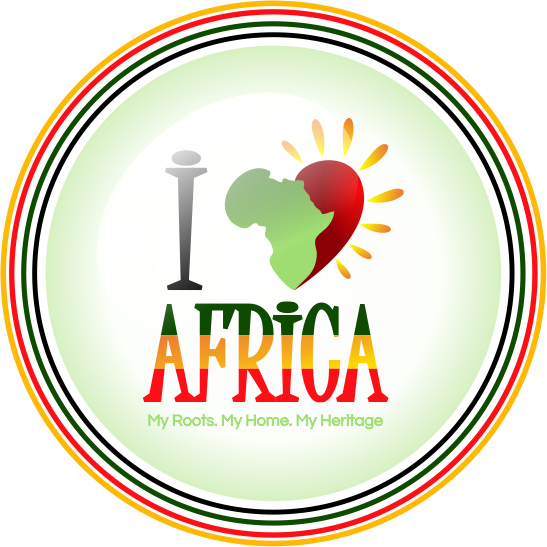South Africa has 11 official languages and a multilingual populace that speaks at least two of them fluently. The main languages are isiZulu and isiXhosa, while English is spoken at home by only one in every ten persons — the majority of whom are not white.
South Africa’s Constitution recognizes 11 official languages: Sepedi (alternatively spelled Sesotho sa Leboa), Sesotho, Setswana, siSwati, Tshivenda, Xitsonga, Afrikaans, English, isiNdebele, isiXhosa, and isiZulu.
South Africa’s official languages for centuries were European – Dutch, English, and Afrikaans. African languages, which are spoken by at least 80% of the population, were overlooked.
South Africa’s new Constitution, adopted in 1996, guaranteed official protection for all major languages.
South Africa has around 34 languages with a long history. Thirty are extant languages, whereas four are extinct.

Overview of South Africa’s languages
IsiZulu is South Africa’s biggest language, spoken by almost a quarter (23%) of the population. Our other official languages are isiXhosa (spoken by 16%), Afrikaans (13.5%), English (10%), Sesotho sa Leboa (9%), Setswana and Sesotho (both 8%), Xitsonga (4.5%), siSwati and Tshivenda (both 2.5%), and isiNdebele (2%).

English is a popular metropolitan language that is frequently used in business, government, and the media. A third (33%) of South Africans who speak English as a first language are white, a quarter (24%) are black, 22% are Indian, and 19% are colored South Africans.
English is commonly utilized as a second language and a primary mode of communication in urban areas.
Afrikaans is a dialect of Dutch that developed from a South Holland dialect introduced to South Africa in the 1600s.
It has absorbed numerous influences from African languages as well as European colonial languages such as English, French, and German over the years. Over half (50.2%) of Afrikaans speakers are colored, 40% are white, 9% are black, and 1% are Indian.

South Africa’s nine African official languages are all members of the Southern Bantu-Makua subfamily, which is itself a component of the larger Niger-Congo language family.
The languages arrived with the enormous eastward and southerly migration of Bantu-speaking people from West Africa into the remainder of the continent.
Around 3000 BCE, the expansion began and was substantially completed by 1000 CE.
As is the case with all Niger-Congo languages, they are tonal languages in which a word’s meaning changes depending on whether it is spoken in a high or low tone.
The nine African languages are broadly classified into two categories:
- Nguni-Tsonga languages: isiNdebele, isiXhosa, isiZulu, siSwati, Xitsonga
- Sotho-Makua-Venda languages: Sesotho, Sesotho sa Leboa, Setswana, Tshivenda
Within the first category, Xitsonga is classified as a Tswa-Ronga language, whereas isiZulu, isiXhosa, isNdebele, and siSwati are classified as Nguni languages.
Similar to Sesotho, Sesotho sa Leboa, and Setswana, Tshivenda is a distinct Sotho language within the Sotho-Makua-Venda subfamily.
Multilingual South Africa
South Africans are fluent in more than one language. The average South African — male, woman, and child – speaks 2.84 languages, according to an approximate estimate based on Census 2001 first-language statistics and a 2002 study of second-language speakers.
Obviously, many people are limited to one language, while others are capable of speaking three, four, or more.

The majority of English and Afrikaans-speaking South Africans (primarily colored, Indian, and white South Africans) are not fluent in African languages but are very fluent in each other’s languages. Multilingualism is widespread among South Africans of African descent.
As a result, South African censuses inquire about the two languages spoken by respondents. In the 2011 Census, the following question was asked:
Which two languages does (a household member) speak the most frequently in this household?
Thirteen alternatives were provided: the eleven official languages of South Africa, plus Sign Language and “Other.” If an individual did not speak a second language, this was also noted.
The maps on the right illustrate the distinction between first and second languages.
While the geographical distribution of dominant first languages fits perfectly with historical and urbanization facts, the picture of second languages is more convoluted and more disorganized.
The second map exposes several details. The first is the scarcity of South Africans who speak only one language.
The second point is that, while English is the dominant first language solely in urban areas — Johannesburg, Cape Town, and Durban – it is widely spoken as a second language throughout the country.
English is widely spread through the media and is widely utilized as a means of communication.
However, many South Africans are required to acquire English, and frequently Afrikaans as well, in order to obtain employment and maintain employment.
These are frequently impoverished individuals who have been denied an appropriate education. Other parts of the world consider the ability to speak multiple languages to be a sign of intelligence.
Multilingualism – a difficult task, especially when dealing with languages from quite diverse families – is a common achievement of the underprivileged in South Africa.
Code-switching South Africa
Language is malleable, particularly in South Africa. Our languages are and have been in a constant state of flux for centuries, influenced by work, migration, education, urbanization, the environments in which we live, friendship, and marriage.
South Africans are code-switching people as a result of this. “Code-switching” refers to the practice of conversing in more than one language simultaneously. Every adult South African does this at least once in their lives, even if they are unaware.
Consider the following scenario, which was overheard at a football match. The IsiZulu text is in ordinary font, the Afrikaans text is in bold, and the English text is in italics:
“I-Chiefs isidle nge-referee’s ngabe ihambe sleg.
Maar why benga stopi this system ye-injury time?”
A rough translation:
“Chiefs [the football club] have won because the referee favored them. Otherwise, they would have lost.
But why is this system of injury time not stopped?”
All of South Africa’s languages are constantly changing and growing as a result of their influences from other languages spoken nearby.
Who speaks what?
The most recent census conducted in South Africa was in 2011. The following table summarizes the census data on first-language speakers.
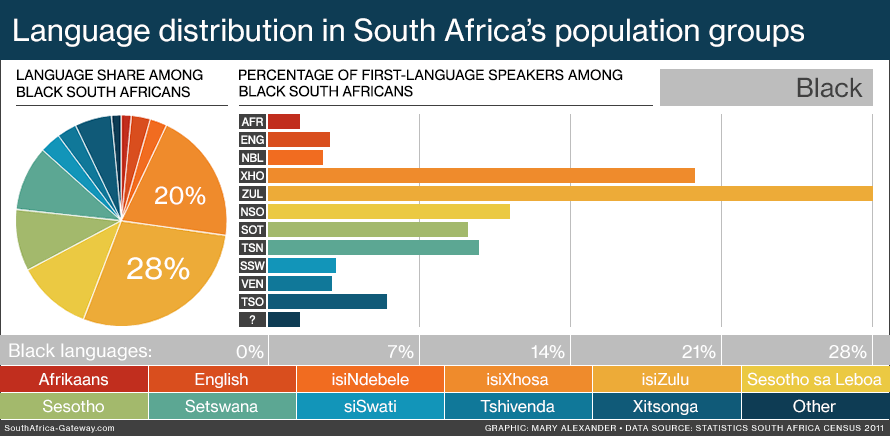
South Africa’s most recent census was in 2011. The following table gives a breakdown of first-language speakers, as recorded by the census.
South Africa’s 11 official languages

The languages of the provinces
The languages spoken in South Africa vary according to location.
IsiXhosa is spoken by approximately 80% of the population in the Eastern Cape. IsiZulu is the most spoken language in both KwaZulu-Natal (78%) and Gauteng (20%). Sesotho is the Free State’s official language, spoken by 64 percent of the population. And so forth…

The main languages of each province are:
- Eastern Cape – isiXhosa (78.8%), Afrikaans (10.6%)
- Free State – Sesotho (64.2%), Afrikaans (12.7%)
- Gauteng – isiZulu (19.8%), English (13.3%), Afrikaans (12.4%), Sesotho (11.6%)
- KwaZulu-Natal – isiZulu (77.8%), English (13.2%)
- Limpopo – Sesotho sa Leboa (52.9%), Xitsonga (17%), Tshivenda (16.7%)
- Mpumalanga – siSwati (27.7%), isiZulu (24.1%), Xitsonga (10.4%), isiNdebele (10.1%)
- Northern Cape – Afrikaans (53.8%), Setswana (33.1%)
- North West – Setswana (63.4%), Afrikaans (9%)
- Western Cape – Afrikaans (49.7%), isiXhosa (24.7%), English (20.3%)
The languages
Unless otherwise specified, the numbers below are from the 2011 Census and pertain exclusively to first language – the language spoken at home.
#1. Afrikaans
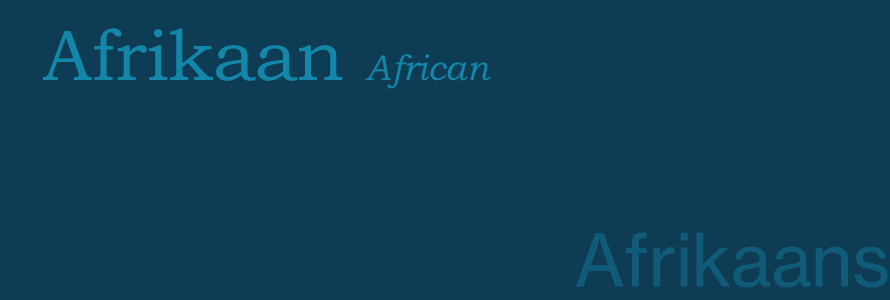
Also known as: isiBhuru (isiNdebele), isiBhulu (isiXhosa), isiBhunu (isiZulu), siBhunu (siSwati), Seburu (Sesotho sa Leboa), Xibunu (Xitsonga)
First-language users: 6,855,082 (13.5% of South Africans)
Second-language users: 10,300,000 (2002 estimate)
All users: 17,155,082 (estimate)
Afrikaans emerged from a seventeenth-century Dutch dialect imported to South Africa in 1652 when the Dutch colonized the Cape of Good Hope for the first time. Today, it is the Northern Cape’s dominant language.
Afrikaans became an official language in South Africa in 1925 when the Official Languages of the Union Act granted the language official status retrospectively to 1910.
Afrikaans is spoken by 6,855,082 South Africans as a first language, accounting for 13.5 percent of the country’s total population. Over half (50.2 percent) of these Afrikaans speakers are ethnic minorities, 39.5 percent are white, 8.8 percent are black, 0.9 percent are Indian or Asian, and 0.6 percent are other.
Over three-quarters, (75.8 percent) of colored South Africans and nearly two-thirds (60.8 percent) of whites speak Afrikaans. It is spoken by 4.6 percent of Indians and Asians, as well as 1.5 percent of black South Africans.
Afrikaans and South Africa’s population groups

The majority of Afrikaans speakers (41%) live in the Western Cape, whereas 21% dwell in Gauteng. The Eastern Cape accounts for 10% of all Afrikaans speakers, the Northern Cape for 8.8%, and the Free State for 5%.
Afrikaans is the majority language of the Northern Cape (53.8 percent) and Western Cape (53.8 percent) (49.7 percent ).
It accounts for 12.7 percent of languages spoken in the Free State, 12.4 percent of languages spoken in Gauteng, 10.6 percent of languages spoken in the Eastern Cape, 9 percent of languages spoken in the North West, 7.2 percent of languages spoken in Mpumalanga, 2.6 percent of languages spoken in Limpopo, and 1.6 percent of languages spoken in KwaZulu-Natal.
#2. English
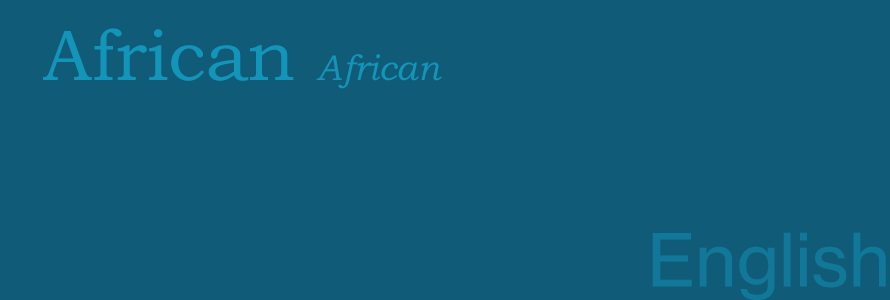
Also known as: Engels (Afrikaans), isiNgisi (isiNdebele and isiZulu), isiNgesi (isiXhosa), Senyesemane (Sesotho), Seisemane (Sesotho sa Leboa), siNgisi (siSwati), Xinghezi (Xitsonga)
First-language users: 4,892,623 (9.6% of South Africans)
Second-language users: 11,000,000 (2002 estimate)
All users: 15,892,623 (estimate)
English is a widely used language in South African public life, with government, business, and the media all relying heavily on it. It is primarily spoken in urban areas as a first language.
In 1910, the new Union of South Africa declared English and Dutch to be their official languages. Since then, English has retained its official status.
South Africans who speak English as a first language amount to 4,892,623 and account for 9.6 percent of the total population. 32.8 percent of English speakers are white, 23.9 percent are black, 22.4 percent are Indian, and 19.3 percent are colored.
The majority (86.1 percent) of Indian South Africans, as well as more than a third (35.9 percent) of whites, speak English as their first language. It is the mother tongue of 20.8 percent of black South Africans and 2.9 percent of colored South Africans.
English and South Africa’s population groups

Gauteng has the highest concentration of English speakers — 1.6 million people, or 32.8 percent of all English-speaking South Africans. Over a quarter (27.3%) live in KwaZulu-Natal, 23.5 % in the Western Cape, and 7.4 % in the Eastern Cape.
English is a minority language in each of the province’s nine municipalities.
It is the second most widely spoken language in both the Western Cape (after Afrikaans) and Gauteng (after Afrikaans) (after isiZulu). It is spoken by 20.2 percent of the population in the Western Cape and 13.3 percent in Gauteng. English is spoken infrequently in the other provinces.
#3. isiNdebele
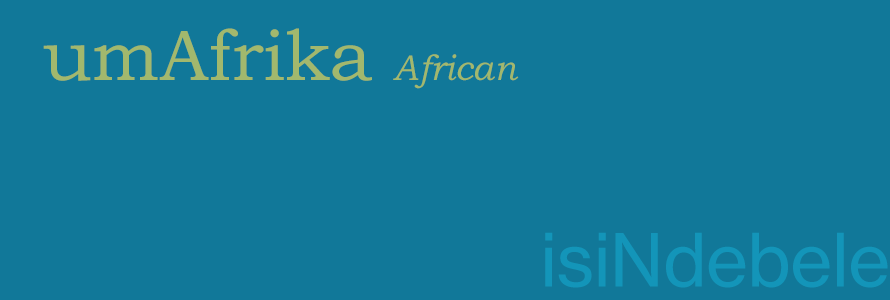
Also known as: Ndebele, Southern Ndebele, Ndzundza, isiKhethu
First-language users: 1,090,233 (2.1% of South Africans)
Second-language users: 1,400,000 (2002 estimate)
All users: 2,490,233 (estimate)
IsiNdebele is the least spoken of South Africa’s 11 official languages, with the majority of speakers concentrated in Mpumalanga and Gauteng.
It is a member of the Nguni language family, along with isiZulu, isiXhosa, and siSwati.
Also known as Southern Ndebele, it should not be confused with Northern Ndebele, most usually referred to as Matabele, which is more closely related to isiZulu and is an official language of Zimbabwe.
South Africans who speak isiNdebele as a first language account for only 2.1 percent of the overall population. 97 percent of isiNdebele speakers are black, 0.9 percent are Indian or Asian, 0.8 percent are colored, 0.8 percent are white, and 0.5 percent are others.
IsiNdebele is spoken by 2.6 percent of black South Africans at home, which is less than the 2.9 percent who speak English.
It is barely spoken by other population groupings, with 0.2 percent of the colored and white population and 0.8 percent of Indian or Asian people speaking it as their native tongue. Additionally, 2.1 percent of persons who identify as “other” speak it.
IsiNdebele and South Africa’s population groups

Mpumalanga has the highest concentration of isiNdebele speakers (37%), followed by Gauteng (34.9%), KwaZulu-Natal (10.2%), Limpopo (9.6%), and North West (9.6%). (4 percent ).
In all provinces, IsiNdebele is a minority language. It is spoken by 10% of Mpumalanga’s population and 3.2 percent of Gauteng.
#4. isiXhosa
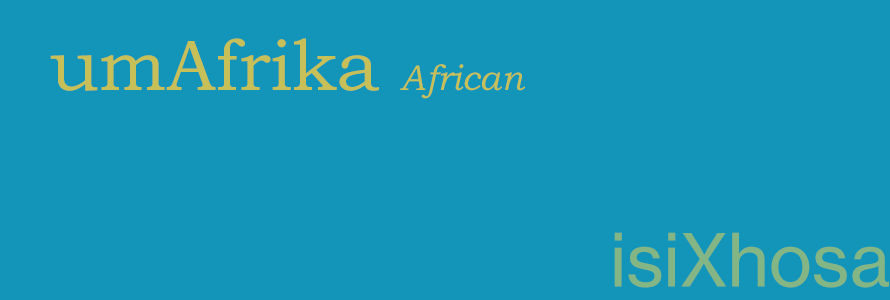
Also known as: Xhosa
First-language users: 8,154,258
Second-language users: 11,000,000 (2002 estimate)
All users: 19,154,258 (estimate)
IsiXhosa, the Eastern Cape’s major language, is also South Africa’s second-largest language after isiZulu. It is a Nguni language, similar to isiNdebele, isiZulu, and siSwati, but exhibits significant Khoekhoe influences.
South Africans who speak isiXhosa as a first language account for 16% of the overall population. 99.4 percent of isiXhosa speakers are black, 0.3 percent are colored, 0.2 percent are white, and 0.1 percent are Indian or Asian.
IsiXhosa is spoken by 20.1 percent of black South Africans, second only to isiZulu. It is spoken by 0.6 percent of persons of color, 0.4 percent of Indians, 0.3 percent of whites, and 1.9 percent of those who identify as “other.”
IsiXhosa and South Africa’s population groups

The Eastern Cape accounts for over two-thirds (62.4 percent) of first-language isiXhosa speakers, while the Western Cape accounts for 17.2 percent. Gauteng is home to nearly a tenth (9.8%) of all isiXhosa speakers.
Within provinces, isiXhosa is the majority language in the Eastern Cape, accounting for 78.8 percent of the population with 5,092,152 first-language users. In the Western Cape, a quarter of the population (24.7 percent) speaks isiXhosa.
IsiXhosa is spoken by 7.5% of the population in the Free State, 6.6% in Gauteng, 5.5% in the North West, and 5.3% in the Northern Cape.
#5. isiZulu
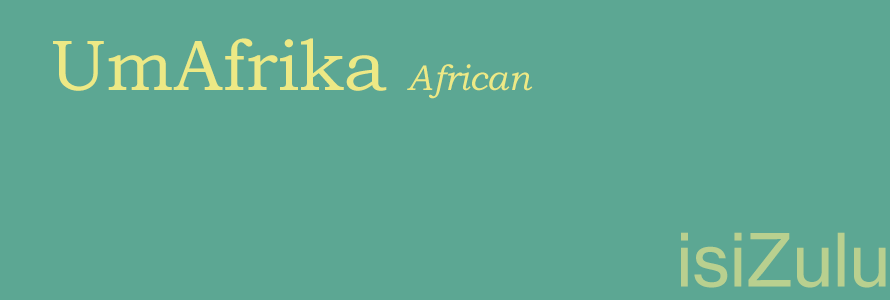
Also known as: Zulu
First-language users: 11,587,374 (22.7% of the population)
Second-language users: 15,700,000 (2002 estimate)
All users: 27,300,000 (estimate)
IsiZulu is South Africa’s most widely spoken language, spoken as a first language by over a quarter of the population. It is the most widely spoken language in KwaZulu-Natal. IsiZulu is a Nguni language, like isiNdebele, isiXhosa, and siSwati.
South Africans who speak isiZulu as their first language account for 22.7 percent of the overall population. There is 99.4 percent of isiZulu speakers who are black, 0.2 percent who are colored, 0.1 percent who are white, and 0.1 percent who are Indian or Asian.
IsiZulu is spoken by 28.5% of black South Africans, the highest percentage of any language. It is spoken by 1.3 percent of Indian or Asian people, 0.5 percent of colored people, 0.4 percent of white people, and 4.1 percent of those who identify as “other.”
IsiZulu and South Africa’s population groups

Over two-thirds (68.2 percent) of South Africans who speak isiZulu live in KwaZulu-Natal, and more than a fifth live in the province (20.6 percent in Gauteng).
Mpumalanga, which borders KwaZulu-Natal to the northwest, is home to 8.3 percent of all isiZulu speakers. The remainder is dispersed throughout the remaining provinces.
Within provinces, isiZulu is spoken by more than three-quarters (77.2%) of the population of KwaZulu-Natal and nearly a quarter (24.1%) of the population of Mpumalanga. Almost a fifth (19.8%) of Gautengers are isiZulu speakers. In the remaining provinces, it is a small minority language.
#6. Sesotho
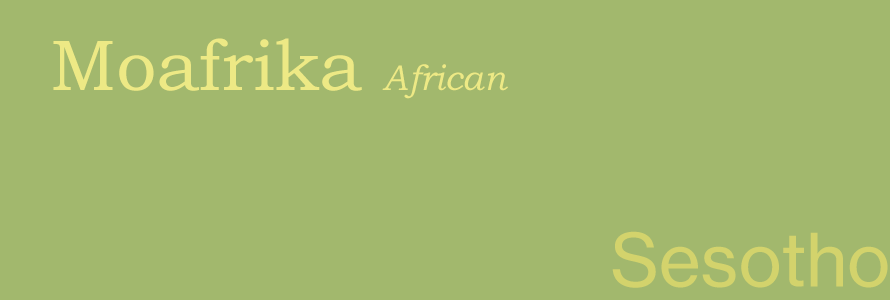
Also known as: Southern Sotho
First-language users: 3,798,915 (7.6% of the population)
Second-language users: 7,900,000 (2002 estimate)
All users: 11,698,915 (estimate)
Sesotho is the Free State’s official language and the mother tongue of 3,798,915 South Africans, or 7.6% of the total population. It is one of three Sotho dialects, the others being Sesotho sa Leboa and Setswana.
98.7 percent of Sesotho speakers in their primary tongue are black, 0.6 percent are colored, 0.5 percent are white, and 0.1 percent are Indian or Asian.
Sesotho is spoken by little less than a tenth (9.4%) of black South Africans. It is spoken by 0.5 percent of people of color, 0.4 percent of white people, 0.4 percent of Indian/Asian people, and 1.7 percent of those who identify as “other.”
Sesotho and South Africa’s population groups

The majority of Sesotho speakers (44.6 percent) live in the Free State. The inner curve of this bean-shaped province follows the northwest boundary of Lesotho, a country with official languages in Sesotho and English.
Gauteng is home to more than a third (36.2 percent) of all Sesotho-speaking South Africans. North West has a population of 5.2 percent.
Within the provinces, Sesotho is spoken by nearly two-thirds (64.2 percent) of the Free State’s population, more than a tenth (11.6 percent) of Gauteng’s population, and 5.8 percent of North West residents.
#7. Sesotho sa Leboa (Sepedi)

Also known as: Northern Sotho
First-language users: 4,618,576 (9.1% of the population)
Second-language users: 9,100,000 (2002 estimate)
All users: 13,518,576 (estimate)
The interim Constitution of 1993 designated Sesotho sa Leboa as the official language. It was then renamed Sepedi in the final 1996 Constitution.
The debate about the appropriate name persists. The majority of language scholars, as well as native speakers, believe that Sesotho sa Leboa is the true name and Sepedi is a dialect.
In a review of six South African colleges’ language policies, it was shown that five utilized Sesotho sa Leboa, and one used Sepedi. However, both the Basic Education Department and Statistics South Africa refer to the language as Sepedi.
Sesotho sa Leboa is the third largest African language spoken in South Africa (after isiZulu and isiXhosa) and is primarily spoken in Limpopo. It is a Sotho language, like Sesotho and Setswana.
4.618,576 people, or 9.1 percent of the total population, speak Sesotho sa Leboa as their native language. 99.7 percent of Sesotho sa Leboa first-language speakers are black, 0.1 percent are colored, 0.1 percent are white, and 0.1 percent are Indian or Asian.
11.4 percent of black South Africans speak Sesotho sa Leboa. It is spoken by only 0.2 percent of Indians, 0.1 percent of persons of color, 0.1 percent of whites, and 0.6 percent of individuals who identify as “other.”
Sesotho sa Leboa and South Africa’s population groups

Nearly two-thirds (61.2%) of all Sesotho sa Leboa speakers live in Limpopo, slightly more than a quarter (27.8%) in Gauteng, and 8.1 percent in Mpumalanga. The few speakers of the language are dispersed throughout the country.
Sesotho sa Leboa is spoken by more than half (52.9 percent) of Limpopo’s population, 10.6 percent of Gauteng’s population, and 9.3 percent of Mpumalanga’s population.
#8. Setswana
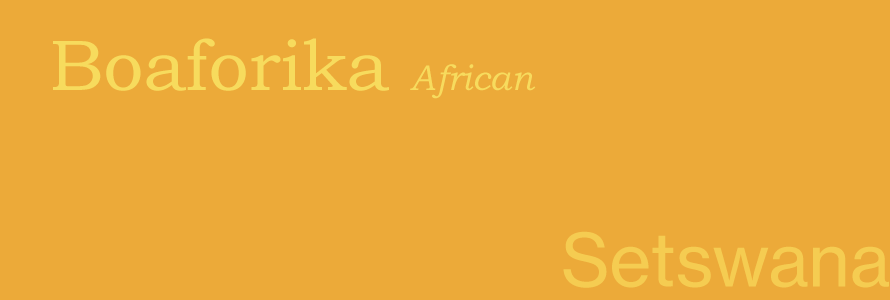
Also known as: Tswana, Sechuana, Chuana
First-language users: 4,067,248 (8% of the population)
Second-language users: 7,700,000 (2002 estimate)
All users: 11,767,248 (estimate)
Setswana is the Tswanaic language of the Sotho-Tswana subfamily, which it shares with Sesotho and Sesotho sa Leboa. Its 3,996,951 speakers account for 8% of the population of South Africa.
Setswana speakers are 98.3 percent black, 1% colored, 0.1 percent Indian or Asian, and 0.1 percent white.
Setswana is spoken by 9.9 percent of black South Africans, making it the population group’s third-largest language. It is the first language of 0.9 percent of persons of color, 0.4 percent of Indians and whites combined, and 2.4 percent of people who identify as “other.”
Setswana and South Africa’s population groups

Over half (52.9%) of Setswana speakers live in North West, a quarter (26.9%) in Gauteng, and nearly a tenth (9.2%) in the Northern Cape. Both North West and Northern Cape are adjacent to Botswana, which has a population of 79 percent who speak Setswana.
Within the provinces, Setswana is spoken by nearly two-thirds (63.4%) of the population of the North West, a third (33.1%) of the population of the Northern Cape, and 9.1 percent of the population of Gauteng, and 5.2 percent of the population of the Free State.
#9. siSwati
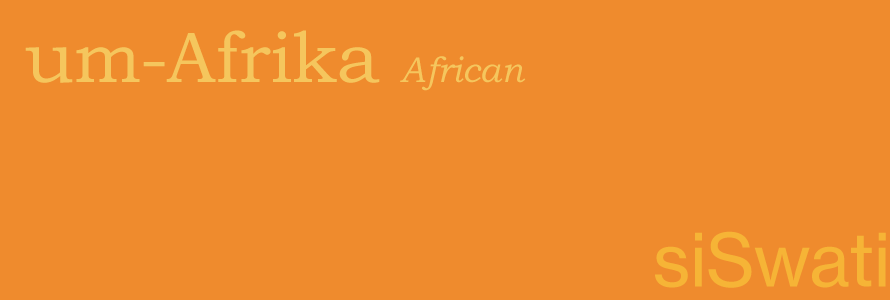
Also known as: Swati, Swazi
First-language users: 1,297,046 (2.5% of the population)
Second-language users: 2,400,000 (2002 estimate)
All users: 3,697,046 (estimate)
SiSwati is primarily spoken in Mpumalanga, which almost completely encircles Swaziland along its curved eastern border. SiSwati, like isiNdebele, isiXhosa, and isiZulu, is a Nguni language.
The 1,297,046 people who speak siSwati account for about 2.5 percent of South Africa’s population, making it the third-smallest language in the country. 99.3 percent of siSwati speakers are black, 0.3 percent are colored, 0.2 percent are white, and 0.1 percent are Indian or Asian.
SiSwati is spoken by 3.2 percent of black South Africans, around 0.1 percent of other population groups, and 0.5 percent of individuals who identify as “other.”
SiSwati and South Africa’s population groups

Mpumalanga has the highest percentage of siSwati speakers at 85.3 percent of total users and the highest provincial concentration of any language. Another tenth (10.5 percent) dwell in Gauteng, and the remainder is spread across the country’s northern regions.
Within the provinces, sisSwati is spoken by 27.7% of Mpumalanga’s entire population and by just 1% of Gauteng.
#10. Tshivenda
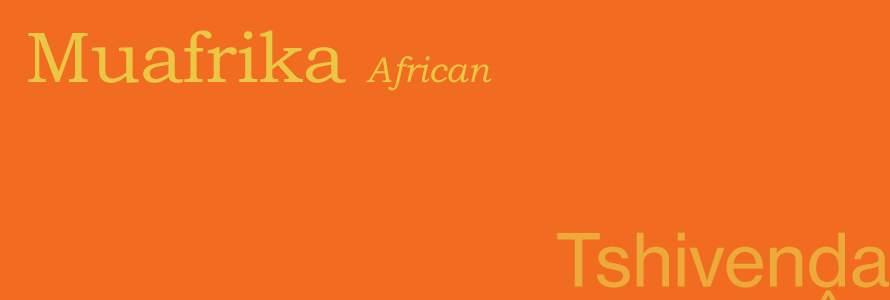
Also known as: Venda, Chivenda
First-language users: 1,209,388 (2.4% of the population)
Second-language users: 1,700,000 (2002 estimate)
All users: 2,909,388 (estimate)
Tshivenda is unique among South Africa’s major African languages, belonging to the Sotho-Makua-Venda subfamily but not to the Sotho group. It is primarily spoken in Limpopo’s extreme northeast.
Tshivenda is spoken by 1,209,388 South Africans, or 2.4 percent of the country’s population. Thus making it the second-smallest language after isiNdebele. Speakers of this language are 99.4 percent black, 0.2 percent colored, 0.2 percent white, and 0.1 percent Indian or Asian.
The language is spoken by 3% of black South Africans, 0.1% of other population groupings, and 0.5% of individuals who identify as “other.”
Tshivenda and South Africa’s population groups

Tshivenda speakers make up over three-quarters (73.8 percent) of the population in Limpopo, making it the second most concentrated provincial language after siSwati. Gauteng is home to another 22.5 percent of Tshivenda speakers.
Tshivenda is spoken by 16.7 percent of Limpopo’s population and 2.3 percent of Gauteng’s population.
#11. Xitsonga

Also known as: Tsonga, Shangaan, Shangana, Vatsonga
First-language users: 2,277,148 (4.5% of the population)
Second-language users: 3,400,000 (2002 estimate)
All users: 5,677,148 (estimate)
Xitsonga is a minority language spoken along South Africa’s northeast border with Mozambique.
Within the broader Nguni-Tsonga language subfamily, which it shares with isiNdebele, isiXhosa, isiZulu, and siSwati, it is the only language that is classified as Tswa-Ronga, whereas the others are classified as Nguni.
South Africans who speak Xitsonga as their first language account for 4.5 percent of the overall population. Xitsonga speakers are 99.1 percent black, 0.2 percent white, 0.1 percent colored, and 0.1 percent Indian or Asian.
5.6 percent of black South Africans, 0.2 percent of Indians, 0.1 percent of whites, and 0.05 percent of those who identify as “others” speak Xitsonga.
Xitsonga and South Africa’s population groups

Nearly two-fifths (39.8%) of South Africans who speak Xitsonga live in Limpopo, more than a third (35%) in Gauteng, 18.3% in Mpumalanga, and 5.6 percent in North West.
Within provinces, Xitsonga is spoken by 17% of the population of Limpopo, 10% of the population of Mpumalanga, and 6% of the population of Gauteng.
